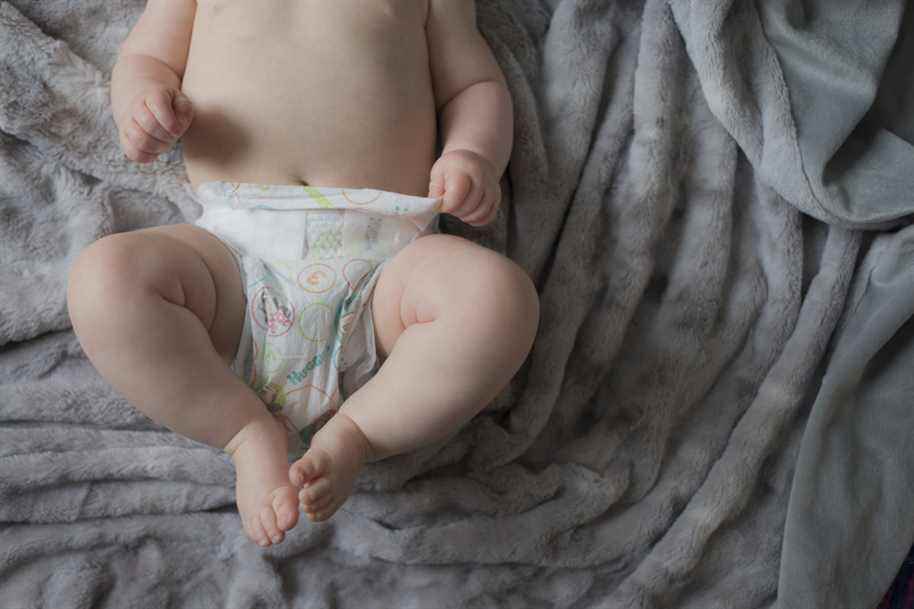Are you going to keep your baby soon? In addition to spare diapers and pajamas, slip an item of clothing you’ve worn into your little one’s bag. This piece of fabric impregnated with your scent could help him develop a bond with his guardian, according to a recent study.
Posted yesterday at 6:00 a.m.
A long-sleeved or short-sleeved shirt? Clothing doesn’t matter, you guessed it. It is rather the maternal odor that plays a role in the social instinct of babies, has shown a study in which Professor Guillaume Dumas, from the CHU Sainte-Justine Research Center and the University of Montreal, participated.
Carried out in collaboration with the Interdisciplinary Center of Herzliya, in Israel, this study looked at how the brain of babies reacts when they are in different situations: in the presence of their mother, in the presence of the mother of another baby and, above all, in the presence of an unknown woman but with a t-shirt impregnated with the maternal smell near the child. The 37 infants who took part in the study were 7 months old on average.
When the baby interacts with his mother, “he is socially engaged and his brain activity is synchronized with his mother’s brain activity”, explains Guillaume Dumas.
“Imagine waves, kinds of oscillations that follow a rhythm. The idea is that the rhythm of the mother and that of the baby are on the same tempo,” says the neuroscientist to illustrate the concept of intercerebral synchronization.
This cerebral concert in unison was not observed when the baby was with a mother who was foreign to him.
What happened when the baby was facing a stranger but he smelled the smell of his mother? “If you put on the t-shirt with your mom’s body odor, it restores prosocial behavior and intercerebral synchronization,” reveals the professor from the University of Montreal.

PHOTO STÉPHANE DEDELIS, PROVIDED BY THE CHU SAINTE-JUSTINE
Guillaume Dumas, neuroscientist at CHU Sainte-Justine and assistant professor in the department of psychiatry and addiction at the University of Montreal
Interestingly, this phenomenon has been observed in both breastfed and bottle-fed babies. It is therefore not linked to the smell of breast milk, but to the body perfume of the mother.
Other research work has also demonstrated the effects of maternal odor in different respects. Toddlers are able to use smells to recognize their mother, for example. “Another paper showed that mom’s scent reduced the neural response [de l’enfant] with faces of fear”, gives as another example Guillaume Dumas.
The researcher and his team are, however, the first to objectively demonstrate intercerebral synchronization and the effect of the mother’s odor on the baby’s social instinct towards a stranger.
Implications
How can the results of the study help parents in their daily lives? They demonstrate objectively that sending a cloth impregnated with the mother’s scent to daycare is not a useless gesture. This garment can really help the baby in his interaction with his educator. “We are providing neuroscientific and controlled proof of this phenomenon,” summarizes Guillaume Dumas. Some daycare centers already offer this practice to parents.
The sense of smell, compared to other senses, has the advantage of not being necessarily linked to the physical presence of the person.
Guillaume Dumas, from the CHU Sainte-Justine Research Center and the University of Montreal
Does it also work with the paternal scent? We can believe so, answers Guillaume Dumas, but another study will have to confirm it. “The case with fathers might be more subtle. »
Another interesting avenue of research that stems from the study results concerns children with autism spectrum disorder. “A typical study that one could do with [d’eux] is to see if, for example, we can manage to improve their social cognition thanks to the smell of their mother,” he suggests.
“The olfactory approach with this paper opens up a whole new field of possibilities”, enthuses the researcher.

